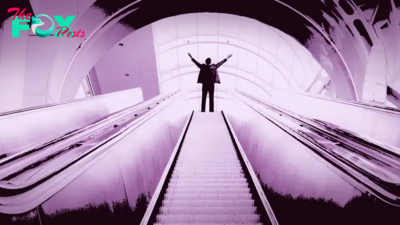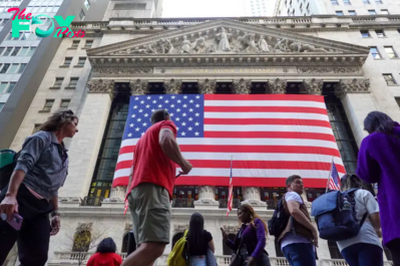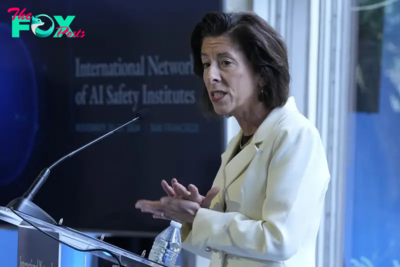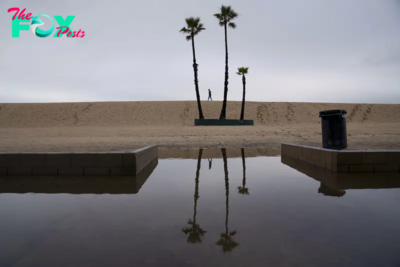US News
When Gentrification Comes to Small Towns
One of the many trends that made headlines during the COVID-19 pandemic was people moving from large, dense cities to smaller cities, towns, and even rural areas. This pattern had been happening prior to 2020, of course, but it accelerated during lockdown, and school and office closures. But the truth is that people with financial means and work flexibility are the most likely to make such a move. Why not avoid the big city’s expensive real estate and get more space and access to nature, the thinking goes. As a result, many in the middle class picked up and left, while the wealthy were able to buy second homes, if they want, for lifestyle flexibility.
The fate of large cities, like the “urban doom loop” of declining downtowns and shrinking tax revenue, has taken up a lot of oxygen. But the places that don’t get as much attention are the ones that have been receiving newcomers from large cities in noticeable numbers.
Small municipalities and rural towns have faced the opposite issue from large cities: instead of the fear of decline, they are experiencing a sudden resurgence of new residents, businesses, development, and investment. In many cases, this influx has revived downtowns and Main Streets that were struggling for many decades. New York State’s Hudson River Valley, which extends 300 miles north from New York City, is a prime example of this. The small cities of Beacon, Kingston, and Hudson all had successful industrial economies before they declined and depopulated. Since the early 2000s, each has recovered with new residents and retail businesses. But, while these sound like positive additions at first glance, even success has consequences.
Believe it or not, there are a lot more small places than large ones in the United States. Out of the approximately 20 thousand incorporated places in the U.S., only 311 have more than 100 thousand residents, while 52% of people who live in an incorporated “city” do so in one with fewer than 250 thousand residents. Yet, small places face many of the same issues that large ones do, including economic and population declines.
When middle-class and wealthy urbanites leave large cities for smaller ones on urban peripheries or in rural hinterlands, they often encounter places that have seen better days. Economic shifts like the decline of manufacturing, regulations on extraction industries like logging, mining, and fishing, and the rise of large-scale agriBusinesses have reshaped everyday life for people in small towns and rural areas. Since the late 20th century, many of these places have seen major and independent Businesses close, housing deteriorate, and young residents leave for better opportunities elsewhere, particularly to large cities.
But the fortunes of some have shifted in the 21st century. International migration, especially from Latin America, has played an important role in rejuvenating small municipalities and rural areas. So has the arrival of big city urbanites in search of affordable real estate, greener locales, and opportunities to be difference-makers in their communities.
An example is Newburgh, another small city in the Hudson River Valley. With cheaper and more available housing and a less competitive labor market, Newburgh has become one of many “new destinations” for immigrant groups with a population that is now approximately 50% Hispanic based on the 2020 US census. At the same time, other newcomers, who are wealthier and mostly white and from New York City, have also arrived. But despite their smaller numbers, they’ve had a noticeable impact on Newburgh’s streetscape and local economy.
There is a degree of pride that emerges from living in a place that is facing long odds. To many lifelong and longtime residents, newcomers and new Businesses filling empty spaces are signs of growth and hope for their much-loved hometowns. Problems can arise, however, when there are resource imbalances and social differences between the new arrivers and the awaiting inhabitants.
Read More: How Puerto Ricans Are Fighting Back Against the Outsiders Using the Island as a Tax Haven
Gentrification is the process of people in the middle- and upper-middle-class moving into a lower-income place and preparing it for increasingly wealthier residents, Businesses, and investors. In recent decades, the term has entered into public discourse and debate around neighborhood change and is the subject of media stories, novels, and television programs. What makes gentrification such a popular and stimulating topic is its inherent controversy: the process both promises to bring benefits to local people and places that have been struggling and puts those same people at risk of being displaced in some form. We usually speak about residential displacement when it comes to those risks, but it can also refer to “everyday” displacement, like the impacts of neighbors being forced to move and Businesses having to close.
We also usually speak about gentrification as something that happens in neighborhoods in big cities. These are the cases we hear about most often, and it’s true that the process originated and certainly still occurs in metropolises. But as the examples of major changes in smaller, disinvested municipalities make clear, gentrification can unfold anywhere we see a sustained iNFLux of residents who are wealthier than much of a place’s existing population. This includes the small cities and towns and country sides that have gotten the attention of migrating urbanites with the resources to make tangible investments.
Newburgh is an example of a small city that has been gentrifying. The city boasts a treasure trove of historical architecture dating back to its 19th century industrial heyday. Disinvestment from manufacturing loss and “white flight” led to its decline. Because of its rich architectural legacy and affordability, Newburgh attracted deal-seeking historic preservationists and property speculators in the late 20th century. But these efforts did not spark a sustained process of in-migration or investment. It wasn’t until the 2010s, when New York City’s housing market reached crisis levels for affordability, that people in the middle-class began to move to Newburgh and other small municipalities within the Hudson Valley region in droves.
Most interestingly, gentrification is distinct in these places compared to large cities in a few ways. First, newcomers to small municipalities tend to be property and Business owners instead of renters and employees. This is because they are usually older and more established in their careers, and the places they move to have much more affordable real estate. Ownership both protects this group from being displaced and gives them greater power to make a difference in the built environment, such as by renovating housing for an upmarket clientele and opening up new Businesses that cater to their own tastes. Newburgh’s gentrifiers, for instance, fit this pattern. Most have become first-time homeowners after a lifetime of renting, and many have become landlords and real estate investors and opened and expanded a Business. And these renovated buildings and new retail are concentrated in the historic part of the city.
A second distinction is that once they settle into their new home, newcomers find that they can make a difference by getting involved and being active politically and civically in local government and the community. Feeling rooted in place and the smaller scale of these municipalities are key factors in this difference. By getting involved, newcomers can end up shifting political agendas and civic foci away from the needs of existing residents, who are more likely to be lower-income, and toward their own needs and preferences, which most often revolve around real estate and nurturing their investments.
Related, newcomers can establish formal and informal partnerships with those lifelong and longtime residents who are not low-income and have been trying to revitalize their hometowns for many years to aid a gentrification process along. In most cases, newcomers to more rural hotspots had never been active civically or politically in their communities. Upon moving there, however, they started getting involved, often joining lifelong residents in their ongoing efforts to improve the city. By attending and speaking up at city government meetings, joining government agencies and committees, and forming new community organizations, they have furthered their interests of escalating property values and expanding the local economy around their tastes in art and culture. In large cities, newcomers to a gentrifying neighborhood can at best help transform a few of its blocks, have minimal impacts at the city level, and have few, if any, connections to local residents who share their interests. In smaller places, they can make a much greater impact on these fronts.
As it always is when discussing gentrification, the question becomes what the long-term effects the process will have on those vulnerable residents in these small and rural places who are at risk of displacement once revitalization sets in. These inhabitants, as a group, tend to lack many housing alternatives.
In Newburgh, for instance, my research has shown that some lower-income Black residents have moved back in with their families because of housing costs. Others have left the city for more affordable municipalities and even returned to their ancestral homes in the South. As this migration pattern continues and we see more and more interest in disinvested, forgotten small places, we will need to change the story from one of restoration to one of caution and concern.
-

 US News1d ago
US News1d agoHow TIME and Statista Determined the Best Companies and Colleges for Future Leaders for 2025
-

 US News1d ago
US News1d agoWorld’s Best Brands – United States
-

 US News1d ago
US News1d agoFlorida Man Arrested and Charged With Planning to Bomb the New York Stock Exchange
-

 US News2d ago
US News2d agoU.S. Gathers Global Group to Tackle AI Safety Amid Growing National Security Concerns
-

 US News2d ago
US News2d agoTexas Offers Trump Land on U.S.-Mexico Border for Potential Mass Deportations
-

 US News2d ago
US News2d ago4B Is Not the Winning Strategy to Resist the Patriarchy People Think It Is
-

 US News2d ago
US News2d ago‘Bomb Cyclone’ Threatens Northern California and Pacific Northwest
-

 US News2d ago
US News2d agoClimate Action in Trump 2.0
















